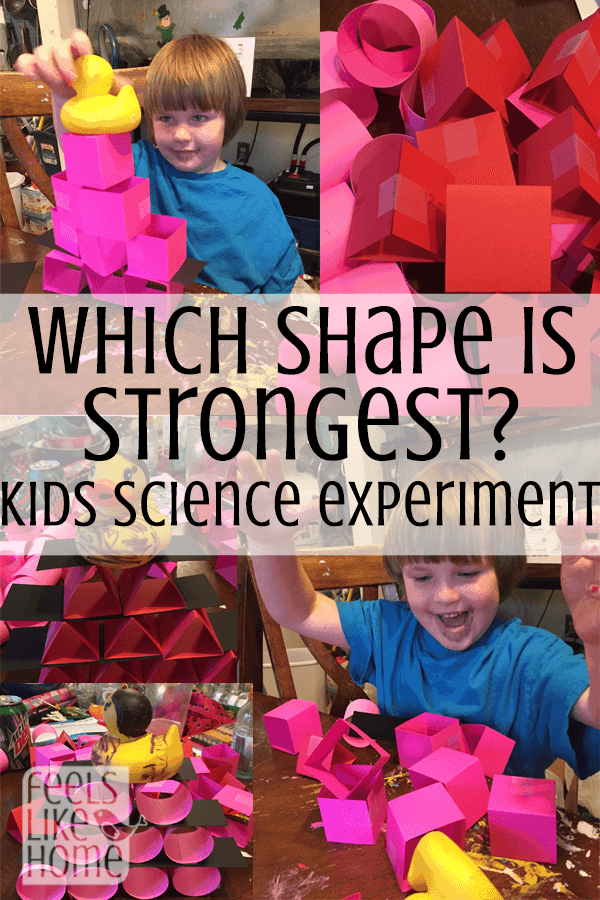
Sometimes, science experiments can look a whole lot like playing, and there is nothing at all wrong with that. This science experiment is exactly that, a lot of playing with a science explanation.
There is quite a bit of prep work for this one, but it is easy, and you can get the kids involved.
The question behind this experiment is which shape is the strongest? So kids can get really creative and arrange their shapes in any number of ways, and the goal is to support the heaviest possible object.
Grace tried exactly one arrangement, and it supported a 2-pound glass jar full of water. I couldn't believe it. She totally predicted that it would work, and when she showed me that it did, she was finished and didn't want to explore any more.
Allie, on the other hand, played with these shapes for a full half hour, building and rebuilding, stacking and restacking, and placing all kinds of objects on top of her tower. She had fun knocking them over and starting again.
I'm not sure if the difference is personality or age. I'll let you be the judge. I enjoyed playing with these shapes myself, as you will see in the photos below.
Also, I didn't throw the shapes out. I stuck them in a little cardboard box, and I will get them out later in the summer for the girls to explore the concepts a bit more.
Materials
- Cardstock in 4 colors - I used what I had gotten for Valentine's Day, so ours was all pinks and red and black.
- Clear tape
- Scissors
- Ruler
- Pencil
Instructions
- Cut the following out of cardstock:
- 12 pieces - 6" x 2"
- 12 pieces - 6.5" x 2"
- 12 pieces - 8" x 2"
- 1 piece - 9" x 2"
- 1 piece - 7" x 2"
- 1 piece - 5" x 2"
- Grab one of the 8" pieces, and mark it every 2". Crease on each mark.
- Use that piece as a template to crease all the 6" and 8" pieces. I folded mine 3 at a time, and it went pretty quickly.
- Tape the 6" pieces into equilateral triangles (that means triangles that have all sides the same length). Tape the 6.5" pieces into cylinders. Tape the 8" pieces into squares.
- Ask your kids to build a tower that will support weight using only one shape at a time. I asked this of Grace, and this is what she built:
- Try not to give too many instructions. Just let them build, and see what they can support. I talked Allie into building towers three levels high (as was my original idea - hence the three black pieces to steady the whole structure), and she had a lot of fun with that.
The Science
The science behind this is pretty easy. Even though we use solid rectangles and squares for building physical structures, they aren't the strongest shapes when empty. The strongest shapes are the triangles. The triangle's shape distributes all the weight on top of the point through the sides and out over the base. When you build with the triangles and cross pieces, you should see the most stability and the least bowing and buckling. Triangles can hold more heavy loads than other shapes.
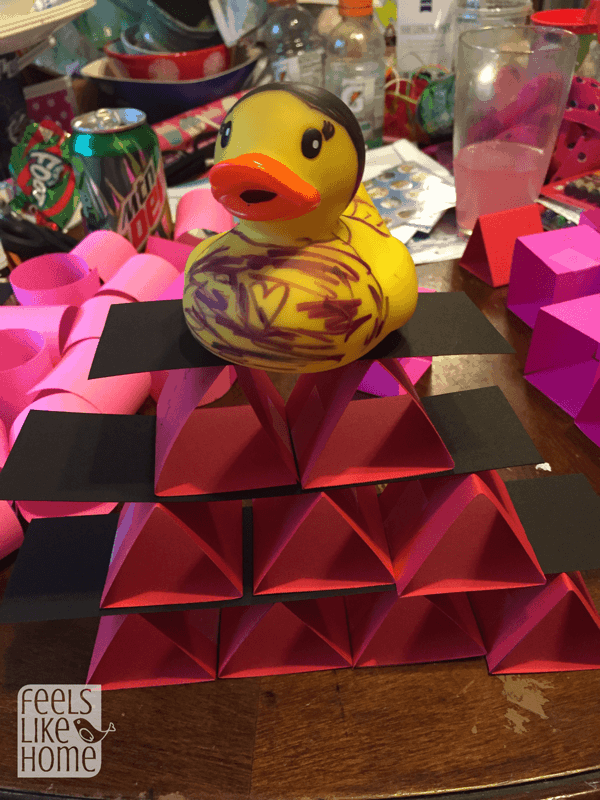
Extend the Experiment
Try to place heavier and heavier objects on top of the pile of shapes. In the picture above, Grace's 1-story "tower" held up the heavy jar of water, but when I made exactly the same thing with 3 stories, it crushed the blocks and left them in a flat heap. We had to switch to the rubber ducky which was significantly lighter.
After they've tried each shape individually, encourage your kids to experiment with different arrangements. One that Allie really liked was the circle inside the square. This proved to be very stable.
Let your kids just play with these shapes if they are interested. The shapes won't be perfectly square, and they will wobble a little. This adds to the creativity and problem solving skills required by your kids.
Have fun!


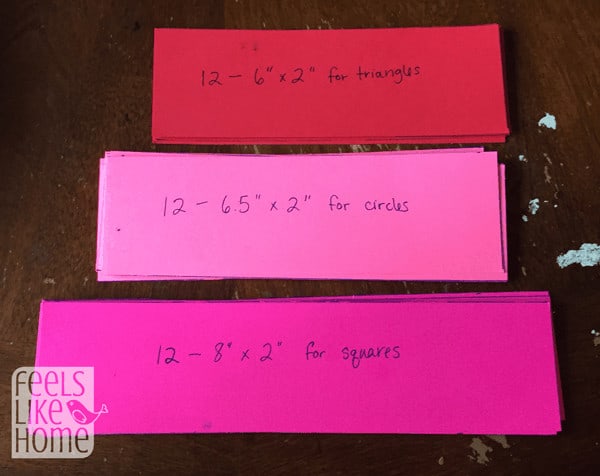
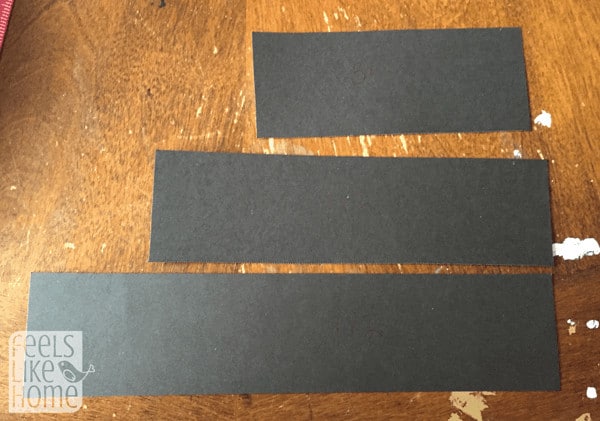
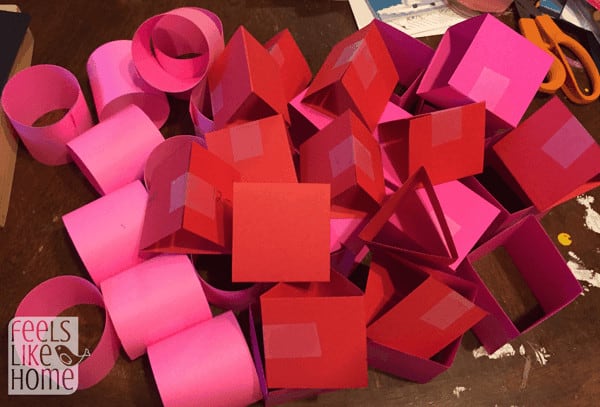
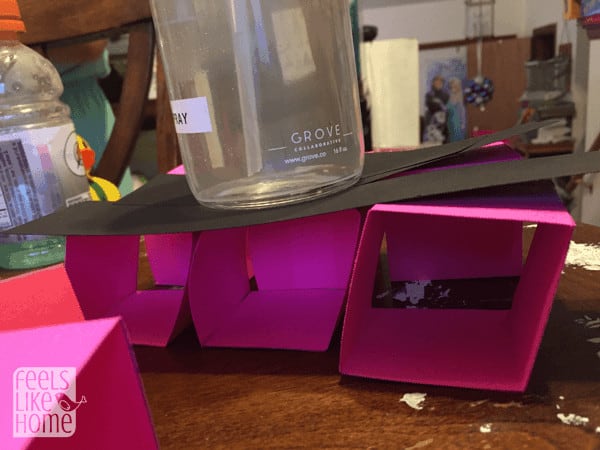
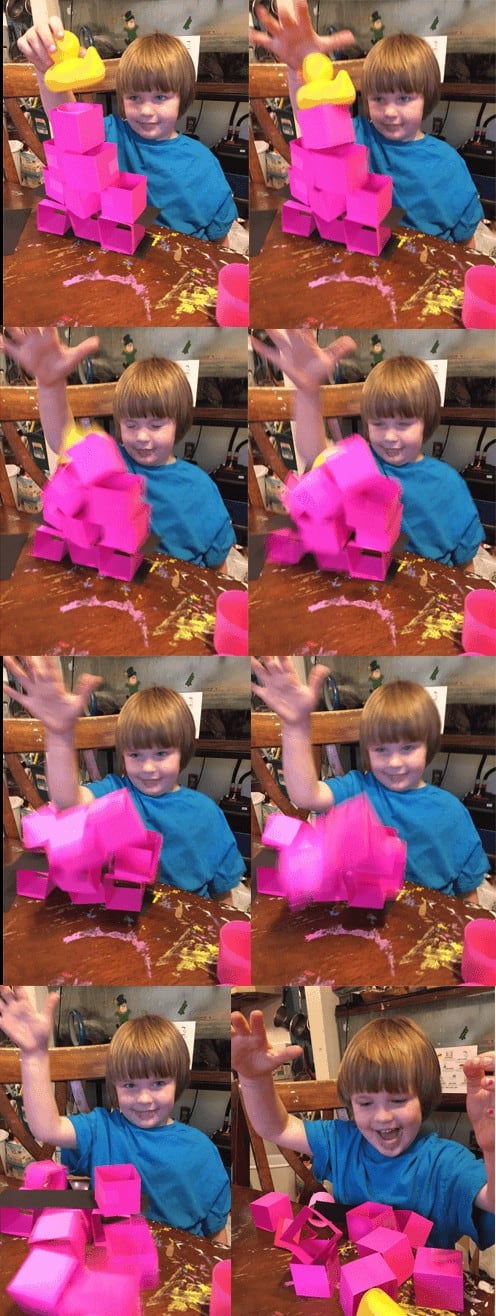


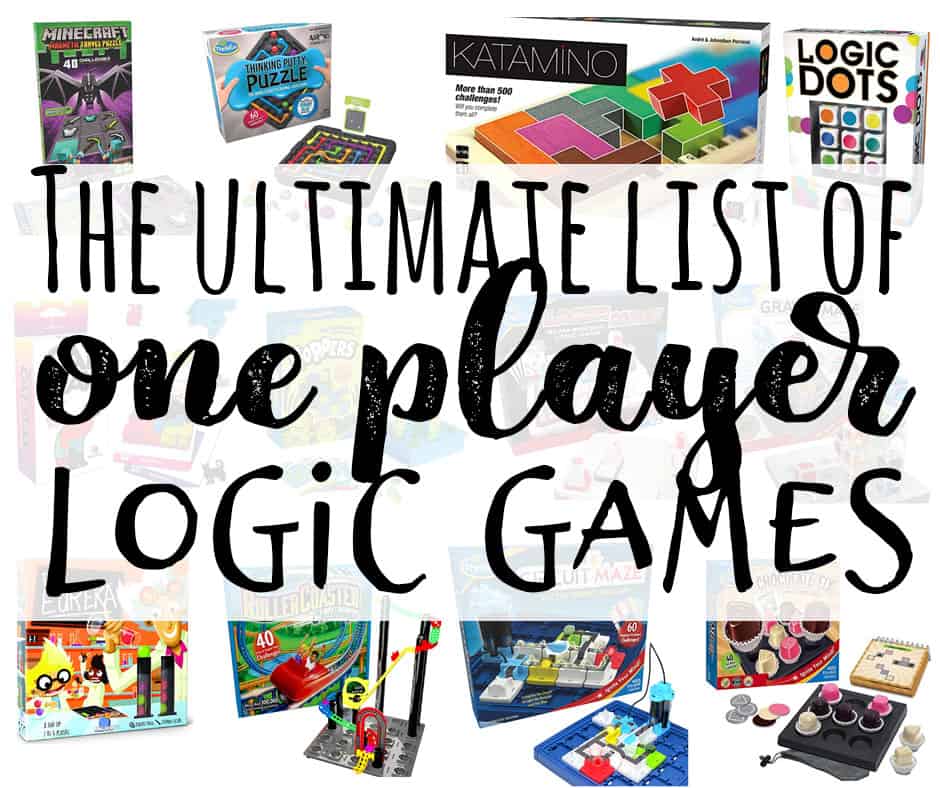

Comments
No Comments